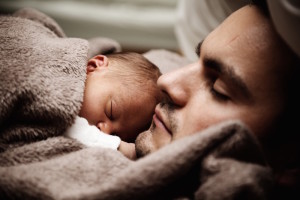Treating Shoulder Pain with PRP

The shoulder is one of the most dynamic and complex joints in the human body. It has the unique ability to perform gross movements with power, like throwing a 100-mile per hour fastball, as well as gentle subtle movements necessary for everyday life. Joints that demonstrate great diversity and flexibility are predisposed to over-use injuries. Sports related shoulder pain can have many causes, however, the most common is rotator cuff tendonitis.
Rotator cuff injury:
The rotator cuff is a group of four muscles that surrounds the shoulder, which synergistically work to stabilize and move the arm. Proper strength, mobility and endurance are essential in initiating and maintaining necessary upper extremity movements. Contiguous with each rotator cuff muscle, is a tendon that connects to the humerus (upper arm bone) and is an insertion point for movement. The majority of the muscular force is concentrated to the tendon at the insertion point onto the bone, which makes it a common site of injury. The tendon has a poor blood supply, so when it is injured, healing is often slow and incomplete with resultant scar tissue formation. Rotator cuff tendonitis is an acute inflammation of the tendon from overuse of the region. If the condition persists for more then 3 months it is usually considered chronic and is referred to as a tendinosis.
Treatment:
Some rotator cuff injuries including, sprains, strains and tendonitis will heal with rest, ice , anti-inflammatory medications and a gradual return to activities. If pain and limited function continue, it is time to seek professional intervention. An MRI of the shoulder, X-ray, as well as a diagnostic ultra-sound would provide the physician with information regarding the dysfunctional painful tendons(s), while ruling out potentially more serious conditions. Likely, after the MRI the majority of patients will proceed to a rehabilitation process to include physical therapy and/or one or more cortisone injections to the inflamed structures. Four to eight weeks of conservative intervention will resolve all but the most stubborn conditions of tendonitis.
The Stubborn Shoulder:
Conditions that have lasted more then 3 months are referred to as chronic tendonitis or more accurately as tendinosis. Until recently, patients that have failed conservative treatment would either elect an arthroscopic surgical intervention or just live with the pain. As a result there is an entire athletic population of patients that have no clear medical solution for this condition and consequently are referred to as the “silent suffers”. Regenerative Medicine, including Stem Cell Therapy and Platelet Rich Plasma Therapy (PRP)are offering effective, non-surgical solutions for patients that have failed traditional methods and are not surgical candidates or are seeking more advanced conservative interventions.
Platelet Rich Plasma Therapy (PRP):
PRP is a new advancement in orthopedic medicine that utilizes the body’s own natural abilities to heal injured rotator cuff tendons, bicep tendons and even labral tears. Doctors have recognized for decades the healing power of growth factor and other powerful proteins located in patient’s blood plasma and platelets. Now we are able to extract and harness those healing powers for the treatment of orthopedic injuries.
The process is surprisingly simple, blood is drawn from the patient and processed it in an FDA approved medical device, to separate the healing power of platelets from blood plasma. The doctor then takes that concentrated healing platelets of the patient’s own blood and re-introduces it or grafts it into the injured site, which has been identified on MRI and Ultrasound imaging. This graft provides the relatively avascular injured structures with blood components to regenerate tissue and speed the healing process. The grafting is done with precise accuracy under Ultrasound imaging and the entire process takes under 1 hour and is performed in an outpatient setting.
The research shows PRP can deliver 500% more growth factor and bio active proteins to the injured area then would occur naturally, thus reducing healing time and returning patients back to their active lifestyles much faster then traditional non-surgical orthopedic treatment
Most patients require 1-3 injections over 2-4 week intervals and are encouraged to participate in post-procedural rehabilitation.
Performance Ortho offers an all-encompassing, inter-disciplinary team approach to treatment unlike any other in the area. In some cases, the patient will also receive Stem Cells or Tenex Health TX TM in conjunction with PRP.
If you have any questions or would like to make an appointment to see one of our Board Certified physicians, please contact our Patient Care Department at 908-756-2424 or you may contact us online.
About the author:
Joseph Mejia D.O., F.A.A.P.M.&R, Is a graduate of the University of Michigan and West Virginia School of Osteopathic Medicine. He is Board Certified in Physical Medicine & Rehabilitation and Sports Medicine. Dr. Mejia received his Fellowship Training in Interventional Pain Management from the University of Medicine and Dentistry (NJ). He is the Medical Director and a practice partner of Performance Ortho.
